Papers by Andreina Costanzi Cobau
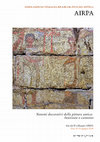
AIRPA, II Colloquio, Pisa, 2018
The discovery of frescoe-painted plastered during an archaeological excavation corresponds to the... more The discovery of frescoe-painted plastered during an archaeological excavation corresponds to the moment of greatest deterioration of the painted surfaces. When the drying of the surfaces start, the water contained in the porous structure evaporates and the soluble salts contained in the water migrate to the surface, crystallizing. The hygrometric equilibrium developed over the centuries between the soil moisture and the plaster is broken, with consequences often irremediable from the conservative point of view.
The size, the refraction of light, the color of crystallized salts are different from those of the same salts dissolved in water. This causes a slow but progressive deterioration with the phenomena of pulverization of the painted surface and superficial bleaching. These phenomena can be prevented by taking simple precautions at the time of discovery, during the excavation or shortly after, when the surfaces are still wet.
In order to avoid deterioration of the painted surface, in case a soil rich in salts and moisture are present, these precautions become indispensable. A preventive conservation intervention based on methods similar to the technique for extracting soluble salts is illustrated, with the goal of transferring the salts evaporation front to a different surface than the painted one, by exploiting the same excavation dirt.

Studies in Conservation, 1996
AbstractArchaeological sites are important for the messages that they convey from the past. Every... more AbstractArchaeological sites are important for the messages that they convey from the past. Everything in archaeology must be devoted to the recovery, preservation, presentation and transmission of that message. Optimum results will be obtained when all professionals involved cooperate towards this common objective. This paper presents two cases of on-site conservation: frescoes of the third century AD at Mamshit, Israel, and frescoes and mosaics of the second century AD at San Paolino alIa Regola, Rome. The first of these treatments was carried out many years after the excavation and represents an example of ‘maximum intervention — minimum efficiency’. In the second case study, collaboration between conservator and archaeologist from the beginning of the excavation made it possible to follow the principle of ‘minimum intervention — maximum efficiency’. Both the treatments presented used local materials similar to the originals. Preventive measures and maintenance programmes have been set up for future co...
ICOMOS, 2018
The need to show to the public issues related to conservation of cultural properties first became... more The need to show to the public issues related to conservation of cultural properties first became clear in the eighties during the great projects conducted in the Roman forum. Three major conservation innovations were introduced at that time: documentation became part of the contract specifications; consolidation was performed using slaked lime; the worksite scaffolding was opened to non-specialists. The way in which the documentation is realized is an indicator of the quality and professionalism of a program. This should incorporate a communication plan, to promote and raise awareness among the public about the instances related to the conservation of cultural heritage. This article addresses the communication principles applied to conservation interventions.
Dopo la scoperta di un importante ipogeo di epoca prenuragica è necessario affrontare i problemi ... more Dopo la scoperta di un importante ipogeo di epoca prenuragica è necessario affrontare i problemi di conservazione, collegati principalmente alla necessità di equilibrio tra le condizioni microclimatiche interne e gli sbalzi termo-igrometrici esterni.
La descrizione dell’intervento di documentazione, conservazione, e musealizzazione sulle sculture... more La descrizione dell’intervento di documentazione, conservazione, e musealizzazione sulle sculture di Mont’e Prama, realizzato dal CCA, Centro di Conservazione Archeologica dal 2007 al 2011
Ferrara 2009
L’intervento di conservazione aperto al pubblico sui centauri capitolini -Aperto per Restauro- p... more L’intervento di conservazione aperto al pubblico sui centauri capitolini -Aperto per Restauro- premiato con il Keck Award nel 2004 a Bilbao durante il convegno internazionale dell’IIC.
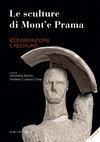
When the search for fracture lines was concluded and
the fragments assembled on their supports, t... more When the search for fracture lines was concluded and
the fragments assembled on their supports, the overall
result (including the non-assembled fragments) provided
extensive data despite the fact that no sculpture was
complete. When all the sculptures are in one place it’s
easier to identify the different typologies, adjusting and
recreating the missing parts. This reconstructive memory
varies according to the context or, in this case, on how
much the sculptures offer the human eye. Virtual
restoration turns what the human brain is only able to
elaborate into something real. But that’s not all; it
overcomes the limits of the panorama available to the
human eye by considering all data available for
reconstruction. A one-of-a-kind virtual restoration was
possible thanks to the numerous fragments available and
the sculptures assembled on supports. After a 3D scansion
and manipulation of the existing volumes we were able
to reconstruct – without using hypothetical iconographic
references – the figures of the archer, boxer and warrior,
as well as the model of the quadrilobed or polylobed
nuraghe; the result was a virtual assembly of real
fragments.
The 5,178 fragments were an excellent and unique
collection with which to perform virtual restoration. We
were able to integrate the data and make it more or less
perceivable and yet continue to respect the characteristics
of the materials; it was also possible to use the same
methodological principals of real restoration for this
virtual restoration project.
Since virtual restoration is a digital elaboration it
provides multiple fruition and increases enhancement.
3D scans provide accurate but lightweight copies of the originals; digital elaborations also allow parameters to be
changed, for example the rotation or lighting of the
sculptures on a 1:1 scale.
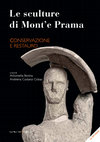
The restoration and conservation project was
organised and planned to be a public cultural event.... more The restoration and conservation project was
organised and planned to be a public cultural event.
Activities were organised during the restoration to
disseminate as much information as possible. While
the worksite was set up to allow guided visits, the
laboratory was turned into a museum and we also
inaugurated a website www.monteprama.it, created
and managed by the CCA. During restoration the
website provided information about ongoing activities
and also published a weekly worksite report. Free
online documentation allowed the public to be
constantly updated and led to a greater team spirit
amongst the restorers. One goal of the website was to
show the public the activities which are normally
difficult to imagine because they are usually performed
in a laboratory/museum and, since they are hidden,
often distance the public from something which
belongs to them. Posters and flyers about initiatives
relating to the restoration were also distributed.
A brochure was printed illustrating the restoration
and a small interactive pamphlet was given to visiting
students; the pamphlet included a form they could use
to participate in a drawing competition entitled The
Poster I want. The students were asked to draw a poster
illustrating the restoration and conservation of the
sculptures. Participation was far greater than expected:
thanks to the goodwill, training and skills of the
teachers who discussed the visit in the classroom,
students of all ages sent in very beautiful drawings. The
closure of the worksite coincided with the award
ceremony; the drawings were judged and chosen by a
panel of experts: Gonaria Demontis, Pietro Longu,
Roberto Nardi, Anna Sanna, as well as special guest
Gaël De Guichen, an authority in the field of cultural
heritage communication.
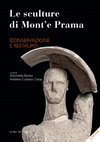
Trying to find the fracture lines between fragments
almost exclusively depends on the expertise a... more Trying to find the fracture lines between fragments
almost exclusively depends on the expertise and talent of
conservators, restorers and archaeologists. Although
computer tools may help, they’ve never replaced direct
observation. This search system used the digital archive
of 5,000 fragments and recorded the similarities identified
by an expert eye. Close-up observation and the study of
details made it possible to join the artefacts thanks to
morphological, typological and iconographic similarities.
It was possible to identify and recognise the similarities
by looking at the alterations on every fragment; these
alterations were often hidden by events which, for each
fragment, had altered the outer appearance in a nonhomogeneous
manner. The history of the sculptural
fragments speaks of abandonment, fire, burial, water
erosion, ploughing, tillage, breakages…Trying to find the
facture lines involved recognising the similarities despite
the alterations, making it possible to put the pieces
together and recreate the sculptural “ensembles”. The
greatest challenge was to recognise, recreate and name
each ensemble; it involved continuous comparison
between the archaeological facts and the technical data
provided by the restorers.
By joining two or more fragments we were able to
identify the specific traits of the ensemble based on the
type of decoration, form, fracture, break, burn,
superficial or structural alteration, biodeterioration, and
anomaly.
We used the type of link between the two fragments
to identify three different “fracture lines” –
correspondence, pertinence or ascription – which
correspond to three different assembly and exhibition
techniques. No pins or new holes were used to assemble
the fragments in line with the principle of conservation
based on minimum intervention and respect for the
original material.
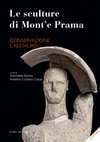
Collecting data produced during the restoration
project is called documentation. To fulfil this t... more Collecting data produced during the restoration
project is called documentation. To fulfil this task
linked to the “manipulation” of 5,000 fragments, we
developed a digital archive. Every fragment was
numbered and recorded with a photo in the database
so that all the data collected could be cross-referenced.
Every fragment and assembled sculpture was drawn to
scale thanks to a technical drawing performed using
three different techniques: direct drawing of the
artefact, graphic transcription of the photograph, and
digital elaboration of the 3D scansion.
The technical drawing were used in the graphic
elaborations, the mappings. The latter included all the
data that could be graphically transcribed based on the
terminology and graphics classified by the Normal
Commission (NORmalisation Stone MAterial) and
classified according to three different analytic types:
the state of conservation, the technical and historical
characteristics, and the restoration intervention.
Documentation is a summarised version of the data
collected through direct observation by the
conservators-restorers during the current restoration
intervention; thanks to this summarised version, the
artefacts can be placed in a broader context. For
example it was possible to provide a unitary interpretation of the features found only in some
sculptures and analysed in detail.
The graphic documentation, together with the
photographs and videos, provides detailed threedimensional
images of the sculptures; at the same time,
it ensures that their message is preserved in the future
thanks to all the data collected and recorded during
restoration. Every noteworthy detail, each unique
feature, every finishing touch or retouch has been
recorded graphically and/or digitally so that it can be
accessed and understood even by those not directly
involved with the restoration.
Alessandro Melucco once wrote: it’s not overdramatic
to say that the lack of good documentation often betrays
an unsatisfactory philological dimension in the approach
and implementation of a restoration project (MELUCCO
VACCARO, 1989). We could add that satisfactory
documentation not only ensures that the collected data
is disseminated, but also that it fulfils the main goal of
every conservation project, especially the Prenda ‘e
Zenia project: to allow the sculptures to transmit their
cultural message in an easy and universal manner.
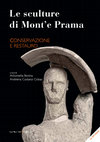
This conservation and restoration project turned
fragments into sculptures; it also included a la... more This conservation and restoration project turned
fragments into sculptures; it also included a laboratory in
which more than 5,000 artefacts were classified, cleaned
and consolidated. These interventions never became
routine and were always carried out bearing in mind the
uniqueness of each fragment. This is important because
every intervention involves manipulation and close-up
observation of the artefact; the conservator/restorer comes
into contact with the original material and studies the
stratigraphy of the superficial alterations, the consistency
of the encrustations, and the inhomogeneous abrasions.
It’s clear that every intervention helps to build – piece
by piece, fragment by fragment – the enormous puzzle
illustrating the history of these sculptures.
Every intervention is a unique opportunity; when it is
based on curiosity rather than standard practice it can
help to understand even the most recondite data.
While numbering the fragments, which was done on
the fracture areas, we were able to identity the most
recent breaks. During the cleaning process we also
linked alveolisation to the structure of the stone
material, carbonate layers of earth to the time it was
buried, more or less obvious abrasions to ploughing, and
chromatic alterations to the application of protective
materials applied immediately after excavation. During
assembly we were able to identify older fractures from
more recent ones. The interventions are described in the same order as they
were carried out. After the first operation (classification of
the artefacts) the reader can follow subsequent operations:
cleaning, removal of salts, consolidation, assembly, and
mounting on support material. Each operation is illustrated
in detail and explanations are provided regarding the reasons
for each decision. An important step in the restoration
process involved identifying and understanding the
degradation mechanisms of the stone surfaces. Cleaning and
consolidation methods were chosen based on the type of
degradation, as were the environmental characteristics
required to preserve the sculptures in the best possible
condition.
No protective layer was applied during final treatment
of the stone because the sculptures will be exhibited in an
indoor museum environment.
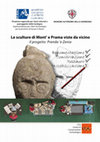
CCA Centro di Conservazione Archeologica, Nov 2011
Le sculture di Mont' e Prama costituiscono una manifestazione molto significativa dell'arte antic... more Le sculture di Mont' e Prama costituiscono una manifestazione molto significativa dell'arte antica e la loro conservazione, assieme allo studio e alla divulgazione dei dati raccolti, sono stati il presupposto del Progetto Prenda 'e Zenia, concepito con l'obiettivo di facilitare il passaggio dei 5178 frammenti lapidei dallo stato di singoli reperti a quello di attori protagonisti del patrimonio culturale mediterraneo. 5178 frammenti, un totale di 9117 Kg il più pesante: 222 Kg i più piccoli: 0,001 Kg 8 frammenti con peso maggiore di: 150 Kg 1883 frammenti di statue Kg. 5798 776 frammenti di modelli di nuraghe Kg. 2870 2519 frammenti indeterminati Kg. 413 15 teste 27 frammenti relativi a busti 176 frammenti relativi a braccia 95 frammenti relativi a mano 121 frammenti relativi a placca pettorale 784 frammenti relativi a scudi 228 frammenti relativi a arco ed elementi ricurvi 143 frammenti relativi a gambe, polpacci e caviglie 116 frammenti relativi a basamento e piedi 1202 frammenti incollati 6178 Kg di questi frammenti: 788 frammenti assemblati in 262 insiemi 414 frammenti montati su supporto Kg 5368 38 sculture montate su supporto, la più pesante pesa Kg 330 di queste 38 sculture: 32 sculture sono il risultato di 414 frammenti assemblati 6 sculture sono un frammento unico 5 arcieri 4 guerrieri 16 pugilatori 13 modelli di nuraghe 15 teste di cui 13 attribuite alle sculture montate 42 piedi di cui 25 attribuiti alle sculture montate 5178 Frammenti Documentazione Restauro Conservazione 4 5
Atti del III colloquio dell'Associazione …, Jan 1, 1996
Close Document Image Close Document Printer Image Print This Document! Conservation Information N... more Close Document Image Close Document Printer Image Print This Document! Conservation Information Network (BCIN). Author: Albini, Romana; Costanzi Cobau, Andreina; Zizola, Chiara Title Article/Chapter: "Ostia antica: la conservazione dei mosaici delle Terme dei Cisiarii. ...
Conoscenze e sviluppi teorici per la conservazione di …, Jan 1, 1987
During excavations at the crypta balbi (rome), treatment was carried out on a semicircular tuff w... more During excavations at the crypta balbi (rome), treatment was carried out on a semicircular tuff wall of an exfora, affected by humidity and salt crystallization. The wall received a coating of limewash, serving both as a consolidant and a sacrificial layer. This coating allows the ...
Plasterwork: history, culture and technology. 1985 …, Jan 1, 1985
Lo stato dell'arte 2: conservazione e restauro, confronto …, Jan 1, 2004
… /International committee for the conservation of …, Jan 1, 1992
ICOM Committee for Conservation tenth triennial …, Jan 1, 1993
In the spring of 1990 the Department of Antiquities of Israel carried out an in situ conservation... more In the spring of 1990 the Department of Antiquities of Israel carried out an in situ conservation intervention of a roman fresco from a villa near Ein Yael, in the vicinity of Jerusalem. The intervention was carried out according to the following principles: in situ consolidation of the fresco; use of products compatible with the original components; application of technique similar to the ancient ones; use of local products and equipment; roofing and protection against water as preventive measures; maintenance program. In the spring 1992 a check-out of the structure confirmed the good effectiveness of the intervention.
ICOM committee for conservation: 8th triennial meeting, …, Jan 1, 1987
In the course of excavation of the Crypt of Balbus in Rome, conservation and maintenance treatmen... more In the course of excavation of the Crypt of Balbus in Rome, conservation and maintenance treatments were carried out on a structure in tuff partly covered with plaster on one side, and shouldered by an embankment on the other side. The problem of crystallization of soluble ...
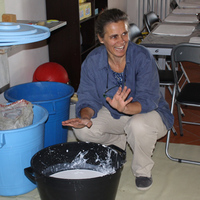


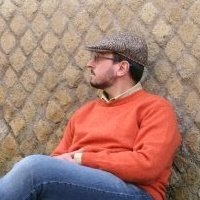

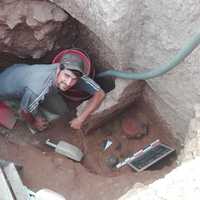

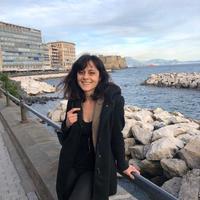

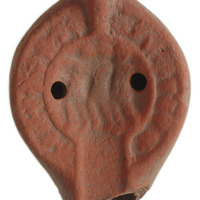
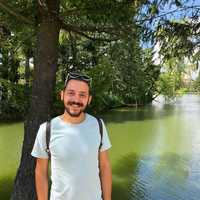
Uploads
Papers by Andreina Costanzi Cobau
The size, the refraction of light, the color of crystallized salts are different from those of the same salts dissolved in water. This causes a slow but progressive deterioration with the phenomena of pulverization of the painted surface and superficial bleaching. These phenomena can be prevented by taking simple precautions at the time of discovery, during the excavation or shortly after, when the surfaces are still wet.
In order to avoid deterioration of the painted surface, in case a soil rich in salts and moisture are present, these precautions become indispensable. A preventive conservation intervention based on methods similar to the technique for extracting soluble salts is illustrated, with the goal of transferring the salts evaporation front to a different surface than the painted one, by exploiting the same excavation dirt.
Ferrara 2009
the fragments assembled on their supports, the overall
result (including the non-assembled fragments) provided
extensive data despite the fact that no sculpture was
complete. When all the sculptures are in one place it’s
easier to identify the different typologies, adjusting and
recreating the missing parts. This reconstructive memory
varies according to the context or, in this case, on how
much the sculptures offer the human eye. Virtual
restoration turns what the human brain is only able to
elaborate into something real. But that’s not all; it
overcomes the limits of the panorama available to the
human eye by considering all data available for
reconstruction. A one-of-a-kind virtual restoration was
possible thanks to the numerous fragments available and
the sculptures assembled on supports. After a 3D scansion
and manipulation of the existing volumes we were able
to reconstruct – without using hypothetical iconographic
references – the figures of the archer, boxer and warrior,
as well as the model of the quadrilobed or polylobed
nuraghe; the result was a virtual assembly of real
fragments.
The 5,178 fragments were an excellent and unique
collection with which to perform virtual restoration. We
were able to integrate the data and make it more or less
perceivable and yet continue to respect the characteristics
of the materials; it was also possible to use the same
methodological principals of real restoration for this
virtual restoration project.
Since virtual restoration is a digital elaboration it
provides multiple fruition and increases enhancement.
3D scans provide accurate but lightweight copies of the originals; digital elaborations also allow parameters to be
changed, for example the rotation or lighting of the
sculptures on a 1:1 scale.
organised and planned to be a public cultural event.
Activities were organised during the restoration to
disseminate as much information as possible. While
the worksite was set up to allow guided visits, the
laboratory was turned into a museum and we also
inaugurated a website www.monteprama.it, created
and managed by the CCA. During restoration the
website provided information about ongoing activities
and also published a weekly worksite report. Free
online documentation allowed the public to be
constantly updated and led to a greater team spirit
amongst the restorers. One goal of the website was to
show the public the activities which are normally
difficult to imagine because they are usually performed
in a laboratory/museum and, since they are hidden,
often distance the public from something which
belongs to them. Posters and flyers about initiatives
relating to the restoration were also distributed.
A brochure was printed illustrating the restoration
and a small interactive pamphlet was given to visiting
students; the pamphlet included a form they could use
to participate in a drawing competition entitled The
Poster I want. The students were asked to draw a poster
illustrating the restoration and conservation of the
sculptures. Participation was far greater than expected:
thanks to the goodwill, training and skills of the
teachers who discussed the visit in the classroom,
students of all ages sent in very beautiful drawings. The
closure of the worksite coincided with the award
ceremony; the drawings were judged and chosen by a
panel of experts: Gonaria Demontis, Pietro Longu,
Roberto Nardi, Anna Sanna, as well as special guest
Gaël De Guichen, an authority in the field of cultural
heritage communication.
almost exclusively depends on the expertise and talent of
conservators, restorers and archaeologists. Although
computer tools may help, they’ve never replaced direct
observation. This search system used the digital archive
of 5,000 fragments and recorded the similarities identified
by an expert eye. Close-up observation and the study of
details made it possible to join the artefacts thanks to
morphological, typological and iconographic similarities.
It was possible to identify and recognise the similarities
by looking at the alterations on every fragment; these
alterations were often hidden by events which, for each
fragment, had altered the outer appearance in a nonhomogeneous
manner. The history of the sculptural
fragments speaks of abandonment, fire, burial, water
erosion, ploughing, tillage, breakages…Trying to find the
facture lines involved recognising the similarities despite
the alterations, making it possible to put the pieces
together and recreate the sculptural “ensembles”. The
greatest challenge was to recognise, recreate and name
each ensemble; it involved continuous comparison
between the archaeological facts and the technical data
provided by the restorers.
By joining two or more fragments we were able to
identify the specific traits of the ensemble based on the
type of decoration, form, fracture, break, burn,
superficial or structural alteration, biodeterioration, and
anomaly.
We used the type of link between the two fragments
to identify three different “fracture lines” –
correspondence, pertinence or ascription – which
correspond to three different assembly and exhibition
techniques. No pins or new holes were used to assemble
the fragments in line with the principle of conservation
based on minimum intervention and respect for the
original material.
project is called documentation. To fulfil this task
linked to the “manipulation” of 5,000 fragments, we
developed a digital archive. Every fragment was
numbered and recorded with a photo in the database
so that all the data collected could be cross-referenced.
Every fragment and assembled sculpture was drawn to
scale thanks to a technical drawing performed using
three different techniques: direct drawing of the
artefact, graphic transcription of the photograph, and
digital elaboration of the 3D scansion.
The technical drawing were used in the graphic
elaborations, the mappings. The latter included all the
data that could be graphically transcribed based on the
terminology and graphics classified by the Normal
Commission (NORmalisation Stone MAterial) and
classified according to three different analytic types:
the state of conservation, the technical and historical
characteristics, and the restoration intervention.
Documentation is a summarised version of the data
collected through direct observation by the
conservators-restorers during the current restoration
intervention; thanks to this summarised version, the
artefacts can be placed in a broader context. For
example it was possible to provide a unitary interpretation of the features found only in some
sculptures and analysed in detail.
The graphic documentation, together with the
photographs and videos, provides detailed threedimensional
images of the sculptures; at the same time,
it ensures that their message is preserved in the future
thanks to all the data collected and recorded during
restoration. Every noteworthy detail, each unique
feature, every finishing touch or retouch has been
recorded graphically and/or digitally so that it can be
accessed and understood even by those not directly
involved with the restoration.
Alessandro Melucco once wrote: it’s not overdramatic
to say that the lack of good documentation often betrays
an unsatisfactory philological dimension in the approach
and implementation of a restoration project (MELUCCO
VACCARO, 1989). We could add that satisfactory
documentation not only ensures that the collected data
is disseminated, but also that it fulfils the main goal of
every conservation project, especially the Prenda ‘e
Zenia project: to allow the sculptures to transmit their
cultural message in an easy and universal manner.
fragments into sculptures; it also included a laboratory in
which more than 5,000 artefacts were classified, cleaned
and consolidated. These interventions never became
routine and were always carried out bearing in mind the
uniqueness of each fragment. This is important because
every intervention involves manipulation and close-up
observation of the artefact; the conservator/restorer comes
into contact with the original material and studies the
stratigraphy of the superficial alterations, the consistency
of the encrustations, and the inhomogeneous abrasions.
It’s clear that every intervention helps to build – piece
by piece, fragment by fragment – the enormous puzzle
illustrating the history of these sculptures.
Every intervention is a unique opportunity; when it is
based on curiosity rather than standard practice it can
help to understand even the most recondite data.
While numbering the fragments, which was done on
the fracture areas, we were able to identity the most
recent breaks. During the cleaning process we also
linked alveolisation to the structure of the stone
material, carbonate layers of earth to the time it was
buried, more or less obvious abrasions to ploughing, and
chromatic alterations to the application of protective
materials applied immediately after excavation. During
assembly we were able to identify older fractures from
more recent ones. The interventions are described in the same order as they
were carried out. After the first operation (classification of
the artefacts) the reader can follow subsequent operations:
cleaning, removal of salts, consolidation, assembly, and
mounting on support material. Each operation is illustrated
in detail and explanations are provided regarding the reasons
for each decision. An important step in the restoration
process involved identifying and understanding the
degradation mechanisms of the stone surfaces. Cleaning and
consolidation methods were chosen based on the type of
degradation, as were the environmental characteristics
required to preserve the sculptures in the best possible
condition.
No protective layer was applied during final treatment
of the stone because the sculptures will be exhibited in an
indoor museum environment.
The size, the refraction of light, the color of crystallized salts are different from those of the same salts dissolved in water. This causes a slow but progressive deterioration with the phenomena of pulverization of the painted surface and superficial bleaching. These phenomena can be prevented by taking simple precautions at the time of discovery, during the excavation or shortly after, when the surfaces are still wet.
In order to avoid deterioration of the painted surface, in case a soil rich in salts and moisture are present, these precautions become indispensable. A preventive conservation intervention based on methods similar to the technique for extracting soluble salts is illustrated, with the goal of transferring the salts evaporation front to a different surface than the painted one, by exploiting the same excavation dirt.
Ferrara 2009
the fragments assembled on their supports, the overall
result (including the non-assembled fragments) provided
extensive data despite the fact that no sculpture was
complete. When all the sculptures are in one place it’s
easier to identify the different typologies, adjusting and
recreating the missing parts. This reconstructive memory
varies according to the context or, in this case, on how
much the sculptures offer the human eye. Virtual
restoration turns what the human brain is only able to
elaborate into something real. But that’s not all; it
overcomes the limits of the panorama available to the
human eye by considering all data available for
reconstruction. A one-of-a-kind virtual restoration was
possible thanks to the numerous fragments available and
the sculptures assembled on supports. After a 3D scansion
and manipulation of the existing volumes we were able
to reconstruct – without using hypothetical iconographic
references – the figures of the archer, boxer and warrior,
as well as the model of the quadrilobed or polylobed
nuraghe; the result was a virtual assembly of real
fragments.
The 5,178 fragments were an excellent and unique
collection with which to perform virtual restoration. We
were able to integrate the data and make it more or less
perceivable and yet continue to respect the characteristics
of the materials; it was also possible to use the same
methodological principals of real restoration for this
virtual restoration project.
Since virtual restoration is a digital elaboration it
provides multiple fruition and increases enhancement.
3D scans provide accurate but lightweight copies of the originals; digital elaborations also allow parameters to be
changed, for example the rotation or lighting of the
sculptures on a 1:1 scale.
organised and planned to be a public cultural event.
Activities were organised during the restoration to
disseminate as much information as possible. While
the worksite was set up to allow guided visits, the
laboratory was turned into a museum and we also
inaugurated a website www.monteprama.it, created
and managed by the CCA. During restoration the
website provided information about ongoing activities
and also published a weekly worksite report. Free
online documentation allowed the public to be
constantly updated and led to a greater team spirit
amongst the restorers. One goal of the website was to
show the public the activities which are normally
difficult to imagine because they are usually performed
in a laboratory/museum and, since they are hidden,
often distance the public from something which
belongs to them. Posters and flyers about initiatives
relating to the restoration were also distributed.
A brochure was printed illustrating the restoration
and a small interactive pamphlet was given to visiting
students; the pamphlet included a form they could use
to participate in a drawing competition entitled The
Poster I want. The students were asked to draw a poster
illustrating the restoration and conservation of the
sculptures. Participation was far greater than expected:
thanks to the goodwill, training and skills of the
teachers who discussed the visit in the classroom,
students of all ages sent in very beautiful drawings. The
closure of the worksite coincided with the award
ceremony; the drawings were judged and chosen by a
panel of experts: Gonaria Demontis, Pietro Longu,
Roberto Nardi, Anna Sanna, as well as special guest
Gaël De Guichen, an authority in the field of cultural
heritage communication.
almost exclusively depends on the expertise and talent of
conservators, restorers and archaeologists. Although
computer tools may help, they’ve never replaced direct
observation. This search system used the digital archive
of 5,000 fragments and recorded the similarities identified
by an expert eye. Close-up observation and the study of
details made it possible to join the artefacts thanks to
morphological, typological and iconographic similarities.
It was possible to identify and recognise the similarities
by looking at the alterations on every fragment; these
alterations were often hidden by events which, for each
fragment, had altered the outer appearance in a nonhomogeneous
manner. The history of the sculptural
fragments speaks of abandonment, fire, burial, water
erosion, ploughing, tillage, breakages…Trying to find the
facture lines involved recognising the similarities despite
the alterations, making it possible to put the pieces
together and recreate the sculptural “ensembles”. The
greatest challenge was to recognise, recreate and name
each ensemble; it involved continuous comparison
between the archaeological facts and the technical data
provided by the restorers.
By joining two or more fragments we were able to
identify the specific traits of the ensemble based on the
type of decoration, form, fracture, break, burn,
superficial or structural alteration, biodeterioration, and
anomaly.
We used the type of link between the two fragments
to identify three different “fracture lines” –
correspondence, pertinence or ascription – which
correspond to three different assembly and exhibition
techniques. No pins or new holes were used to assemble
the fragments in line with the principle of conservation
based on minimum intervention and respect for the
original material.
project is called documentation. To fulfil this task
linked to the “manipulation” of 5,000 fragments, we
developed a digital archive. Every fragment was
numbered and recorded with a photo in the database
so that all the data collected could be cross-referenced.
Every fragment and assembled sculpture was drawn to
scale thanks to a technical drawing performed using
three different techniques: direct drawing of the
artefact, graphic transcription of the photograph, and
digital elaboration of the 3D scansion.
The technical drawing were used in the graphic
elaborations, the mappings. The latter included all the
data that could be graphically transcribed based on the
terminology and graphics classified by the Normal
Commission (NORmalisation Stone MAterial) and
classified according to three different analytic types:
the state of conservation, the technical and historical
characteristics, and the restoration intervention.
Documentation is a summarised version of the data
collected through direct observation by the
conservators-restorers during the current restoration
intervention; thanks to this summarised version, the
artefacts can be placed in a broader context. For
example it was possible to provide a unitary interpretation of the features found only in some
sculptures and analysed in detail.
The graphic documentation, together with the
photographs and videos, provides detailed threedimensional
images of the sculptures; at the same time,
it ensures that their message is preserved in the future
thanks to all the data collected and recorded during
restoration. Every noteworthy detail, each unique
feature, every finishing touch or retouch has been
recorded graphically and/or digitally so that it can be
accessed and understood even by those not directly
involved with the restoration.
Alessandro Melucco once wrote: it’s not overdramatic
to say that the lack of good documentation often betrays
an unsatisfactory philological dimension in the approach
and implementation of a restoration project (MELUCCO
VACCARO, 1989). We could add that satisfactory
documentation not only ensures that the collected data
is disseminated, but also that it fulfils the main goal of
every conservation project, especially the Prenda ‘e
Zenia project: to allow the sculptures to transmit their
cultural message in an easy and universal manner.
fragments into sculptures; it also included a laboratory in
which more than 5,000 artefacts were classified, cleaned
and consolidated. These interventions never became
routine and were always carried out bearing in mind the
uniqueness of each fragment. This is important because
every intervention involves manipulation and close-up
observation of the artefact; the conservator/restorer comes
into contact with the original material and studies the
stratigraphy of the superficial alterations, the consistency
of the encrustations, and the inhomogeneous abrasions.
It’s clear that every intervention helps to build – piece
by piece, fragment by fragment – the enormous puzzle
illustrating the history of these sculptures.
Every intervention is a unique opportunity; when it is
based on curiosity rather than standard practice it can
help to understand even the most recondite data.
While numbering the fragments, which was done on
the fracture areas, we were able to identity the most
recent breaks. During the cleaning process we also
linked alveolisation to the structure of the stone
material, carbonate layers of earth to the time it was
buried, more or less obvious abrasions to ploughing, and
chromatic alterations to the application of protective
materials applied immediately after excavation. During
assembly we were able to identify older fractures from
more recent ones. The interventions are described in the same order as they
were carried out. After the first operation (classification of
the artefacts) the reader can follow subsequent operations:
cleaning, removal of salts, consolidation, assembly, and
mounting on support material. Each operation is illustrated
in detail and explanations are provided regarding the reasons
for each decision. An important step in the restoration
process involved identifying and understanding the
degradation mechanisms of the stone surfaces. Cleaning and
consolidation methods were chosen based on the type of
degradation, as were the environmental characteristics
required to preserve the sculptures in the best possible
condition.
No protective layer was applied during final treatment
of the stone because the sculptures will be exhibited in an
indoor museum environment.
Il progetto di restauro delle sculture di Mont'e Prama ha costituito un avvincente momento di incontro tra archeologia e conservazione. Attraverso la descrizione dgli interventi realizzati su oltre 5.000 frammenti, è possibile scoprire nei dettagli le sculture musealizzate. Il materiale costitutivo è un calcare segnato dalle complesse vicende subite nel corso di 30 secoli. La descrizione degli interventi, rispondenti ai requisiti di conservazione riconosciuti e condivisi a livello internazionale, è articolata nei saggi e nel DVD allegato, quali strumenti imprescindibili per le integrazioni con gli ulteriori ritrovamenti. Il progetto ha rispettato i diritti di conservazione delle sculture e ha garantito i diritti di partecipazione dei cittadini, allestendo nel 2011, a conclusione dell'intervento, una mostra di tutte le sculture assemblate. Il progetto di conservazione viene presentato in tutte le sue sfaccettature, a salvaguardia degli esiti che, contribuendo a ricostruire il contesto antico, costituiscono le fondamenta per creare lo sviluppo della ricerca su queste sculture, testimoni di scienza e cultura di un'eccezionale Civiltà della Sardegna.
to discuss the significance of conservation in archaeological context. Conservation in archaeology shows a
cultural delay regarding modern meaning of conservation and prevention. We want to make archaeology
aware of conservation and vice versa, emphasizing the absence of a professional figure like an archaeologist/
conservator.
The documentation and conservation stages gathered substantial historical and technical data concerning mortar characteristics, details of iconographic motifs, as well as general deterioration typologies. Iconographic motifs and systems were identified: in particular, two small domes with flowers and a velarium.
The most ambitious aspect of the project was the reconstruction of the panelled ceiling and planning for installation in a museum context, along with an opus sectile floor and wall veneers. The result is a hypothetical reconstruction, open to further modifications and additions, exhibited in the Alghero Municipal Museum.